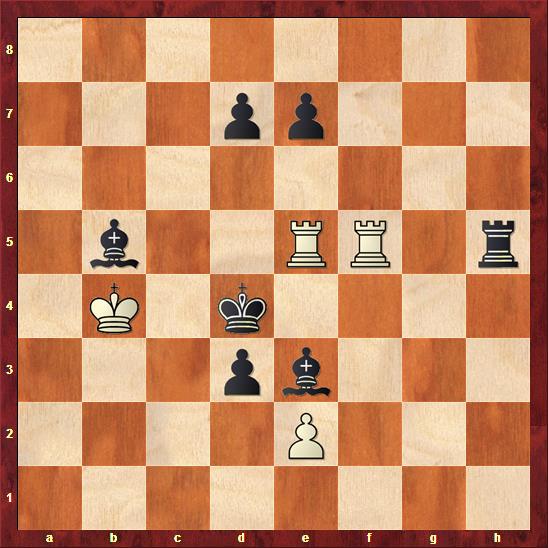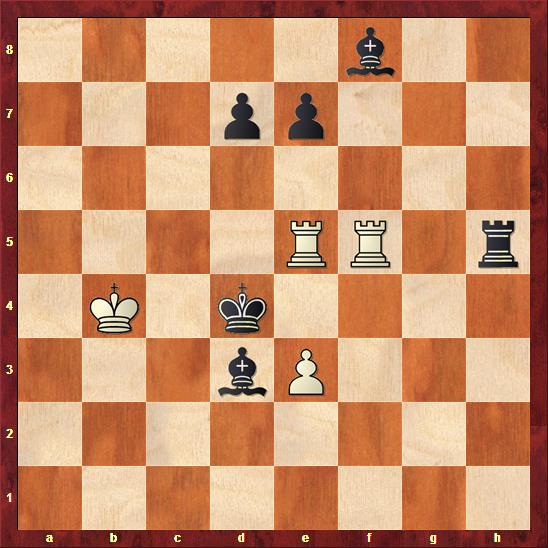With the students returning tomorrow I'm afraid I have to blog and run. But I do want to continue my look at Circe problems this week. So here's a minor effort of mine, published in the U. S. Problem Bulletin all the way back in 1994. The stipulation calls for mate in ten. But remember that we're playing under Circe rules:

Let me remind you how Circe works. Everything proceeds as in normal chess until a piece is captured. When that happens, the captured piece is immediately reborn on its home square in the initial game array. So, for example, if the white queen is ever captured during the play, she immediately reappears on d1. The rebirth occurs as part of black's move, so white is immediately free to move the queen on his next move. Rooks, bishops, and knights are reborn on the home square of the same color as the one they were captured on. Pawns are reborn on the same file as they were captured on. If the rebirth square is occupied by a piece of either color, then the captured piece is simply removed from the board like normal.
It might sound confusing, but things will become clear very quickly from looking at an example.
Okay, let's get on with things. Despite the length of this problem, you might find it solvable. If you'd rather not be bothered, then just read on.
I think the play speaks for itself, so let's have a look. White begins with 1. dRe5+ Kd4 2. e3+ fxe3 (e2), with the parenthesis after black's last move indicating the rebirth of the white pawn on e2. The position is now this:

In Circe chess, you can sacrifice the same piece (or pawn) multiple times. Play now continues 3. Rd5+ Ke4 4. exd3+ (d7) cxd3 (d2), leading to this position:

Perhaps you're starting to see the main idea. The rebirth of the black pawn on d7 is not relevant, but the white pawn is now poised to go another round. I've been reading a lot about thermodynamics lately, and the motions of the white pieces remind me of the cycles of a Carnot engine.
We now have: 5.dRe5+ Kd4 6. dxe3+ (e7) Bxe3 (e2):

You might enjoy working out why the rebirth of the black pawn on e7 is relevant to the later play. We're getting close to the end now. 7. Rd5+ Ke4 8. exd3+ Bxd3 (d2):

Since d7 is occupied, the captured black pawn is not reborn. Now the big finish: 9. dRe5+ Kd4 10. dxe3 (Bf8) mate.

The reborn black pawn on e7 provides a convenient interference against the reborn black bishop on f8, thereby avoiding an annoying check to the white king.
This problem is a personal record for me, in that it took me about ten minutes to go from having the idea for the problem to having the finished version. So you can imagine my surprise when the problem received the fourth honorable mention in the tourney. (Basically, it was seventh best out of thirty-three entries that year.) The judge was Hans Peter Rehm, who is chess problem royalty. (Come to think of it, I have not featured any of his problems yet in this series. I'll have to rectify that at some point!) In the award his comment was, “A witty problem is as uncommon as a witty person. Not deep, however, and rather easy but fun to solve.” I'll take it!
See you next week.

Very tasty, this one. And again -- solvable! I like Rehm's quote here, and I'll add one from Thomas Harris' Silence of the Lambs:
"Problem-solving is hunting; it is savage pleasure and we are born to it."
Slightly off-topic but did you see John Stewart's segment on chess on the Daily Show last night? I have no background knowledge in this at all, but Stewart was saying that the US is attempting to "buy" chess masters (which I assume means: get them to compete for the US rather their home country) ahead of some upcoming competition. Is there any truth in this? What's your opinion on it?
I did see that segment, but it's news to me. I doubt he just made it up though, so he must have gotten it from somewhere.
With the breakup of the Soviet Union, several countries, particularly the United States and Israel, saw their chess strength suddenly go way up, thanks to the sudden influx of Russian emigres. A few Olympiads back our team consisted entirely of Russian immigrants, for example. In the past, the US Chess Federation has been willing to fiddle with residency requirements to make it possible for some hotshot player or other to represent the US.
As it happens, the US currently has two top ten players in Hikaru Nakamura and Wesley So. So our team is already quite strong. We are always competitive in the Olympiads, even though we usually finish off the podium.